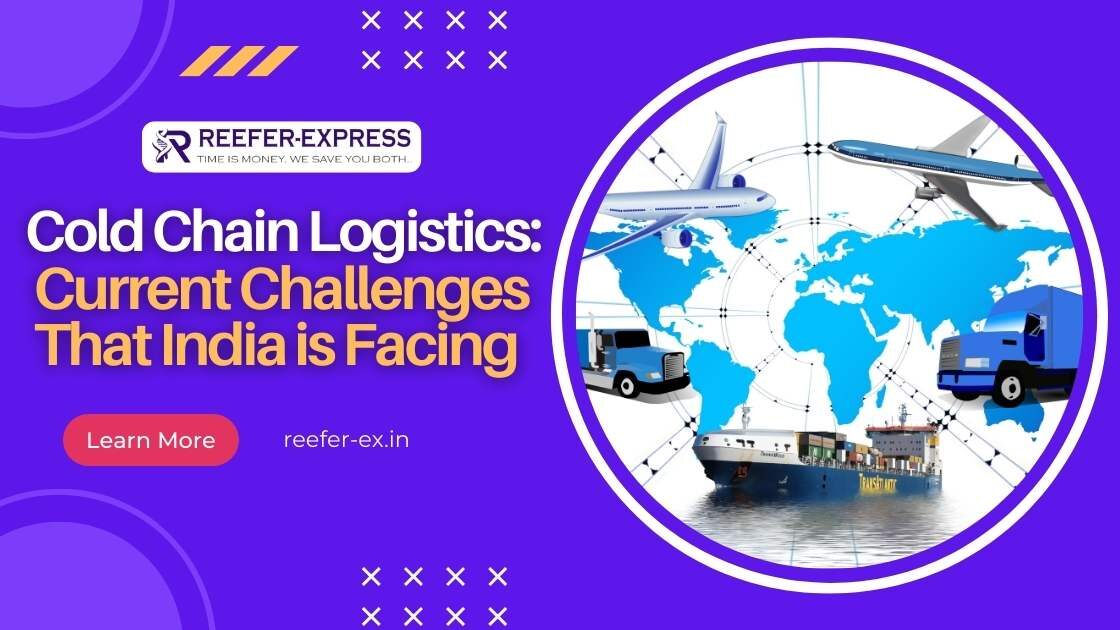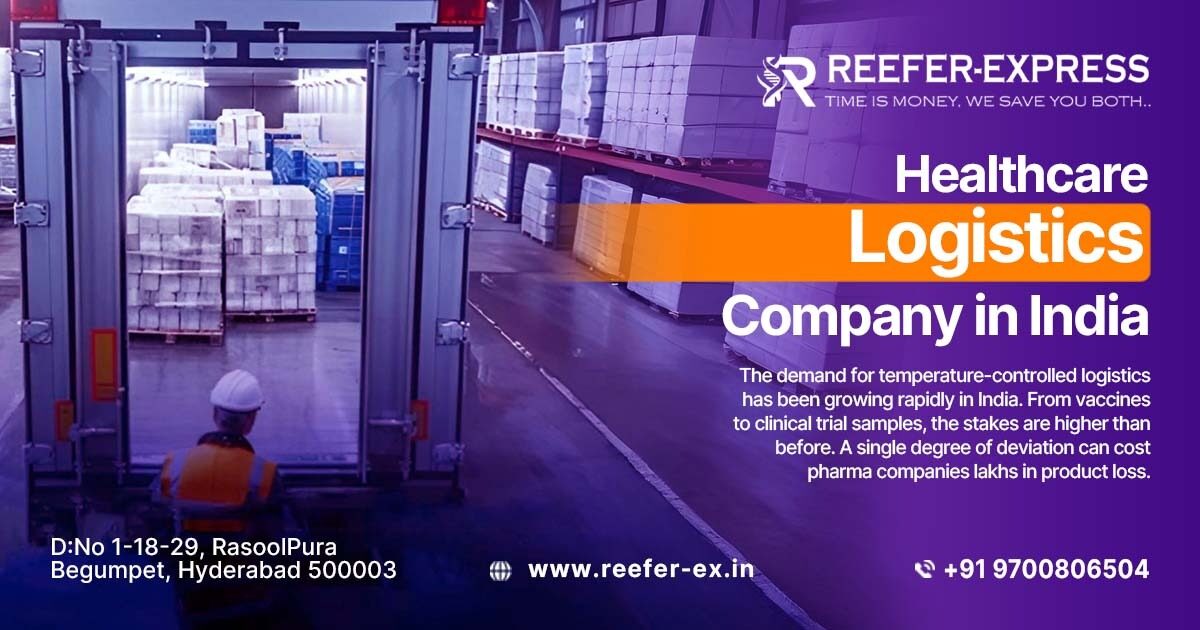Cold chain logistics is an essential component of the supply chain management process, especially in the food and pharmaceutical industries. In this process transit and storage of temperature-sensitive items, such as vaccines, medicines, and perishable food products is done in a temperature-controlled environment. These items are being stored at a constant and controlled temperature to maintain their quality and freshness.
In India, cold chain logistics is still a relatively new concept, and the country is facing several challenges in its implementation. However, the Cold supply chain is facing a lot of challenges in India due to the lack of infrastructure, insufficient investment in technology, and poor last-mile connectivity. This is further compounded by issues related to handling, packaging, storage, and monitoring standards.
Present Challenges of Cold Supply Chain in India
1. Mobile infrastructure:
The lack of mobile infrastructure is a major hindrance in the efficient functioning of the cold supply chain system. Poor connectivity and low bandwidth further affect the tracking and monitoring process, resulting in delays, inaccurate data collection, and overall mismanagement of resources.
To ensure that your business can transport goods, you must first develop the right equipment. This includes freezer trucks and vans for storing food and pharma products. You’ll also need carriers with merchandising carts – these last two types of vehicles can be found on any marketplace!
2. Energy supply
Due to India’s over-dependence on electricity from coal-fired power plants, cold chain logistics is facing problems such as frequent and unannounced power cuts, voltage surges that damage electrical equipment, and inadequate energy efficiency standards. To ensure higher safety levels in the transport of temperature-sensitive items, one must invest in alternative energy sources such as solar or other renewable energy solutions.
3. Higher operating costs
As Indian companies operating in the country face an uphill task when it comes to keeping their costs down, even with increased competition from other businesses trying out new ideas and concepts. The high expense of fuel has been one major factor leading them towards higher expenses than what they would otherwise be had there only been local demand for cold storage space.
4. Tech Adoption
India has a long way to go when it comes to integrating technologies such as Artificial Intelligence, Machine Learning, and the Internet of Things into their operations. This lack creates broken cold chains which leads both operators and product manufacturers to lose money due to the unoptimized system they have now.
5. Equipment breakdown
The breakdown of a powered cooling system is not only costly but also dangerous. Power outages or electricity fluctuations can lead to the failure and spoilage of stored foods, medicines which may result from poor maintenance needs for cold chains due to both power interruptions as well increased temperatures at certain points during transport causing perishable goods such loss with no compensation possible because there’s no way they could’ve predicted this would happen!
6. Human errors
Cold chain logistics management is an intricate process that requires highly trained professionals who have the know-how to operate various pieces of cold storage and transportation equipment. Unfortunately, human error can still slip through cracks, which might lead to damaged food or pharma products due to the mishandling of goods at any point in the chain.
Note- To ensure that India has an efficient Cold Supply Chain network, the government and private investors need to invest more heavily in infrastructure and technology. This could include the implementation of national standards for cold chain logistics, the adoption of alternative energy sources, and better training of personnel.
7. Unorganized industry
The cold chain industry in India is fragmented and virtually non-existent across many states. Punjab, West Bengal, and Uttar Pradesh account for more than 60% of the country’s storage capacity within this space – but there’s hope on the horizon!
The Government of India through its National Cold Chain Development Program (NCCDP) is aiming at creating a robust cold chain network that can provide the required infrastructure support to all agro-industries. The NCCDP has identified several initiatives which include strengthening existing operations, providing financial assistance for new projects and entrepreneurs, as well as providing skill development and capacity building for existing operators.
Quick Tips To Tackle Cold Chain Logistic Challenges in India
- Invest in alternative energy sources such as solar or other renewable energy solutions.
- Adopt technologies such as Artificial Intelligence, Machine Learning, Internet of Things for optimization of the system.
- Ensure regular maintenance and service of cold chain equipment to prevent breakdowns and anomalies in the network
- Train personnel to handle and monitor cold chain processes.
- Invest in a nationwide cold chain infrastructure with the support of government initiatives such as the National Cold Chain Development Program (NCCDP).
- Adopt unified standards and protocols for monitoring and regulating temperature, humidity, and other perishable goods during transit.
- Introduce third-party logistics providers and other collaborative business models to streamline operations and reduce costs.
- Foster collaboration between stakeholders in the industry, including retailers, wholesalers and suppliers.
- Leverage digital and analytics-driven solutions to enable real-time tracking and management of cold chain logistics processes.
- Establish partnerships with leading international experts in the field of cold chain logistics and technology.
- Develop a comprehensive cold chain logistics policy that takes into consideration the industry’s unique challenges and needs.
- Regularly review processes and procedures to identify areas of improvement.
- Encourage research and development in emerging technologies such as blockchain and advanced analytics to improve functionality, visibility, control, and accuracy of Cold Chain Logistics operations in India.
By taking these steps, India can leverage its existing infrastructure and resources to ensure a world-class cold chain logistics experience that meets the needs of business owners, customers, and other stakeholders. With proper execution and monitoring, Cold Chain Logistics in India will continue to thrive as a key driver of economic growth in the country.
Final Thoughts
Cold chain logistics is an essential component of the supply chain management process, especially in the food and pharmaceutical industries. India is facing several challenges in the implementation of cold chain logistics, such as the lack of infrastructure, transportation, awareness, and regulatory challenges. To overcome these challenges, the government and other stakeholders need to work together to develop a robust and reliable cold chain logistics system that can handle the requirements of temperature-sensitive goods efficiently. The implementation of cold chain logistics will not only ensure the quality and safety of temperature-sensitive goods but will also contribute to the growth and development of the economy.
Why Choose Reefer Express To Hire Cold Chain Logistics Services
Reefer Express is a reliable and experienced provider of cold chain logistics services. They have state-of-the-art facilities and a fleet of specialized vehicles that can handle the transportation and storage of temperature-sensitive goods. Reefer Express also has a team of experts who can provide customized solutions to meet the unique needs of their clients. By choosing Reefer Express, you can be assured of the safe and efficient handling of your temperature-sensitive goods. Contact us today to learn more about their cold chain logistics services and how they can benefit your business.






